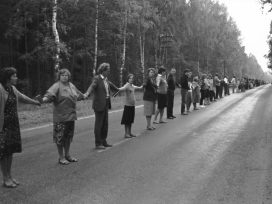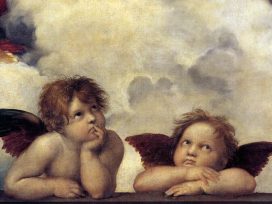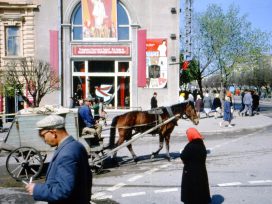Towards the end of Solzhenitsyn’s Cancer Ward, the central character, Oleg Kostoglotov, visits the local zoo, where he is confronted with two radically different animals. First, a mountain goat:
In his big open cage rose a steeply-sloping cliff that fell away to a precipice. And right there, his front legs on the very edge of the precipice, fixed, motionless, proud, stood the goat on his slim strong legs, with his astonishing horns – long, twisted, as though wound coil by coil from ribbons of bone. From his chin hung not a beard, but a luxuriant mane, falling down, down on both sides to his knees, like a mermaid’s hair.
In the next cage along is a frantic squirrel churning endlessly in its small cage:
There was no external force in the cage that could stop the wheel and snatch the squirrel away, and there was no force of reason that might have persuaded the squirrel, “Stop! It’s all in vain!” No – there was only one inescapable, clear outcome – the death of the squirrel. You didn’t want to stand waiting for that to happen. Oleg moved on.
The allegorical significance of these two visions is obvious even without Solzhenitsyn’s prompt to the reader: “Thus, with two highly significant examples – to the right and the left of the entrance, two different but equally possible lines of being, the zoo welcomed its visitors great and small.” It is underlined by the difference in habitat (big open cage, vol’era vs. small one, kletka, “cliff” versus “wheel”), the animals’ poses (standing versus running), and the emotional coloration of their behaviour (dignity vs. madness). In the context of the present discussion, notable is the fact that the comparison between these two “different but equally possible lines of being” is structured round a closed/open opposition (both animals are, technically speaking, enclosed, but the squirrel is subject to secondary incarceration), and the fact that they are wholly detached from each other (a squirrel can never become a goat, and vice versa). Just as important, though, is the fact that the comparison between “lines of being” is framed in purely individualistic terms. So too is the lesson learned by the observer, Kostoglotov – whose desire to avoid entrapment and compulsion is expressed in denial, the jettisoning of relations with other people, as he literally takes flight in blissful solitude.
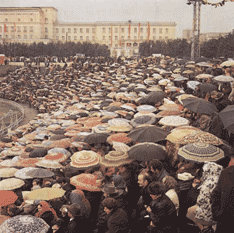 Solzhenitsyn’s representation of Kostoglotov is typical of reflections on Soviet existence in seeing the transition from “closed” to “open” modes of existence at the level of an inner transformation of the thinking, solitary self (compare the essays of Andrei Sinyavsky and Joseph Brodsky). Political and cultural transition is visualised in terms of the reshaping of consciousness. In this respect, such observers are akin, of course, to Popper himself, who saw the “open society” as primarily “the society in which individuals are confronted with personal decisions”. While the “closed society” itself has often, in the Soviet context, been presented in rather different terms to Popper’s view of this as organic and dependent on “biological time” and “tribal” traditions, views of the Soviet “closed society” are similar in assuming that just one “collective” personality type – rule-bound, conformist, or alternatively, communitarian – characterised an entire culture.
Solzhenitsyn’s representation of Kostoglotov is typical of reflections on Soviet existence in seeing the transition from “closed” to “open” modes of existence at the level of an inner transformation of the thinking, solitary self (compare the essays of Andrei Sinyavsky and Joseph Brodsky). Political and cultural transition is visualised in terms of the reshaping of consciousness. In this respect, such observers are akin, of course, to Popper himself, who saw the “open society” as primarily “the society in which individuals are confronted with personal decisions”. While the “closed society” itself has often, in the Soviet context, been presented in rather different terms to Popper’s view of this as organic and dependent on “biological time” and “tribal” traditions, views of the Soviet “closed society” are similar in assuming that just one “collective” personality type – rule-bound, conformist, or alternatively, communitarian – characterised an entire culture.
A drawback to the “closed/open” dichotomy is, then, that it simply reinforces time-honoured views of Soviet society as monolithic – whether in the “totalitarian” model of top-down domination, or the view that has gained currency since the late 1990s (one, actually, closer to Popper’s original model), which sees Soviet society in terms of a “dream of unity and beauty and perfection”, an “aestheticism and holism of collectivism”, and “the product as well as the symptom of the lost group spirit of tribalism”. For example, recollections of Soviet festivals emphasise above all the unity of those celebrating:
People try to explain that the standard phrases about “solidarity” actually had meaning:
“You know, strange as it may seem, the fact that they ground into us that it was a festival of solidarity, of communality and so on, it sank down inside. […] I was only a girl then. Do you see, dear? But I still felt it. Nobody ever said it directly. But when you got out on to the street – that sense of communing with other people! […] Yes-yes-yes. It’s an amazing feeling. Because no one ever explained to me things would be like that. It was a sort of internal feeling. […] Right, we sort of felt, right, that… right… we were all together…”
Neither perception of Soviet society allows much room for diversity of reaction, evidence of which can certainly be found in Soviet texts. The writer Igor’ Dedkov, for example, though no dissident, was inclined to find the festivals monotonous, if not laughable. On 4 May 1982, he noted, “On the First of May Toma and I went to the main square, using our official passes. As always there were many KGB officers in their dress uniforms, and ones in plain clothes as well […] The weather was wonderful and there were lots of people out on the streets. It was the usual First of May picture. Every year it’s the same. It’s only the portraits that are different.” On 8 November 1980, he recorded that the commemoration of the Great October Revolution inspired irony, rather than a pious sense of solidarity, among some members of the general public as well:
.
…A few days before the holidays I was riding the trolley-bus and I heard three men by the window chatting.
“Hey, look,” said one of them, “they’re building a new tribune, I knew nothing about that.”
“And not just any tribune,” said another. “A metal one. Well, you can see why, can’t you: if they put up a wooden one, it might get burned down. Then they’d turn up on the Seventh of November and there’d be no tribune for them to stand on.”
All three of them burst out laughing, and the third one, the one who hadn’t said anything, gave me an enquiring look. (I should add that the man who’d started the conversation and the other two were clearly complete strangers to each other.) I couldn’t stop myself smiling as well. One hundred per cent silent understanding.
Thus, even such occasions of mythic solidarity as festivals did not have uniform effects. Though Dedkov’s records also show how shared ridicule could act as a force of social solidarity, the main dynamic recorded by his diary, and by many other late Soviet sources, was an increasing sense of atomisation. Advice manuals reflected this too, when fretting about how to deal with widespread “indifference” [ravnodushie] towards breaches of the collective ethos. At the same time, there was a widespread belief in the intelligentsia that interfering with people one did not know was not legitimate. The writer Yuri Trifonov, for example, agonised about how on earth he was to tell his dacha neighbours to turn down their radio – could such interference be countenanced?
 Individualism and the spread of a belief that collective practices were losing their meaning were especially characteristic of the late Soviet period. In turn, Solzhenitsyn’s Cancer Ward shows Kostoglotov making exactly the sort of “personal decisions” that were seen as essential to the “open society” by Popper. One could posit numerous causes for the emergence of “personal decisions” (or personal reactions): the shift to single-family accommodation, the growing stratification of incomes and opportunities, and increasing cynicism about Soviet corporate rituals. Yet one may doubt whether the emergence of a psychologically autonomous type actually constituted a move to an “open society”. Important as the sense of the solitary self may have been as a phenomenon in intellectual discourse, the Soviet everyday was also characterised by a proliferation of tightly constrained group relationships – for example, the “informal networks” that have been analysed by Alena Ledeneva, but also including the literary and artistic groupings of the so-called andergraund, the informal seminars run by philosophers and academics, etc., etc. As a speaker at a 1989 meeting held at the Union of Writers put it, late Soviet society was broken up into “groups large, small, and microscopic” [gruppy, gruppki i gruppochki]. Yet while excellent work on group relations exists, the study of Soviet culture continues to be dominated by the “transformed consciousness” model – compare the hegemony at present of interpretations in terms of “Soviet subjectivity”.
Individualism and the spread of a belief that collective practices were losing their meaning were especially characteristic of the late Soviet period. In turn, Solzhenitsyn’s Cancer Ward shows Kostoglotov making exactly the sort of “personal decisions” that were seen as essential to the “open society” by Popper. One could posit numerous causes for the emergence of “personal decisions” (or personal reactions): the shift to single-family accommodation, the growing stratification of incomes and opportunities, and increasing cynicism about Soviet corporate rituals. Yet one may doubt whether the emergence of a psychologically autonomous type actually constituted a move to an “open society”. Important as the sense of the solitary self may have been as a phenomenon in intellectual discourse, the Soviet everyday was also characterised by a proliferation of tightly constrained group relationships – for example, the “informal networks” that have been analysed by Alena Ledeneva, but also including the literary and artistic groupings of the so-called andergraund, the informal seminars run by philosophers and academics, etc., etc. As a speaker at a 1989 meeting held at the Union of Writers put it, late Soviet society was broken up into “groups large, small, and microscopic” [gruppy, gruppki i gruppochki]. Yet while excellent work on group relations exists, the study of Soviet culture continues to be dominated by the “transformed consciousness” model – compare the hegemony at present of interpretations in terms of “Soviet subjectivity”.
This proliferation of groups was partly the result of tolerance or even encouragement of activities “on a public footing” (na obshchestvennykh nachalakh) in the Khrushchev era, and to a lesser extent under Brezhnev. But while some “informal” groups were sponsored or tolerated by the authorities (for instance, the writing groups of the late 1950s and early 1960s), for the most part they did not at all resemble the rational “collectives” of Soviet power, and hence cannot be explicated solely by reference to official cultural policy.
Equally, the “circle semantics” of late Soviet urban society cannot be explained by reference to the “Slav soul”, with its “infrangible boundary” between “one’s own” (svoe) and “theirs” (chuzhoe). These are effective ways of expressing difference, but the term “alien” is also powerful, and to speak of “us and them” (or “they’re out to get us”) makes one’s suspicion perfectly clear. Svoi chelovek (in the context of exclusive social relations) is adequately translated by the old-fashioned British English phrase, “one of us”. The existence of such phrases does not of itself exclude the possibility that language users may espouse alternative behaviour strategies. Take the case of David Astor, social grandee, but also editor, in the 1960s and 1970s, of the leading liberal newspaper The Observer. The paper was owned by the Astor family trust, the foundation, one might think, for employment policies of old-style patronage. But, as the psychologist Oliver James recalled in 2005, “When considering a potential employee he would ask: ‘Is he one of us?’ If the answer was yes, he would say: ‘Well, we don’t want him, then.'”
The Astor case provides a neat example of a society in transition. But the mechanisms here are different from those customarily set out in definitions of the “closed” and “open” society, which tend to emphasise ideology and institutions. For Popper, the characteristics of the “closed society” included self protection, anti-humanitarianism, autarky, particularism, the striving for mastery, and the exercise of rigid control over the size of the state (as in Sparta). All of these characteristics relate to social control at the macro level and have little to do with “society” in the sense of interpersonal relations. The reluctance to associate with people who are not part of your accustomed circle – a trait surely crucial to any “closed society” – is not subsumed by any of the rather abstract categories cited.
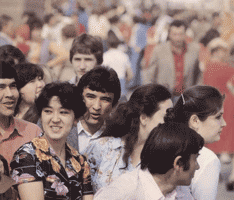 Arguably, a closed society is impermeable not just in the sense that it is cut off from the outside world, but in the sense that groups within it are cut off from each other. It displays rigidity not just in terms of vertical relations (the vertikal’ vlasti or “power vertical” that is now the subject of so much discussion in Russia), but in terms of horizontal relations. Individuals who are equal in terms of their social status and social and cultural capital (i.e. who stand at the same point in the vertical hierarchy) are likely to occupy meticulously differentiated positions in the network of horizontal social relations. While difference is present in any human society, in the “closed society”, such difference is likely to be given an emotional and evaluative status, and processes of “othering” (suspicion or mistrust of “them” or the chuzhie) will proliferate. For example, generational difference is likely to be accorded much weight.
Arguably, a closed society is impermeable not just in the sense that it is cut off from the outside world, but in the sense that groups within it are cut off from each other. It displays rigidity not just in terms of vertical relations (the vertikal’ vlasti or “power vertical” that is now the subject of so much discussion in Russia), but in terms of horizontal relations. Individuals who are equal in terms of their social status and social and cultural capital (i.e. who stand at the same point in the vertical hierarchy) are likely to occupy meticulously differentiated positions in the network of horizontal social relations. While difference is present in any human society, in the “closed society”, such difference is likely to be given an emotional and evaluative status, and processes of “othering” (suspicion or mistrust of “them” or the chuzhie) will proliferate. For example, generational difference is likely to be accorded much weight.
Of course, it could be argued that generation is an issue of vertical hierarchy (and the same could be said of gender difference, also an important distinguishing feature in the closed society). But in fact, the distinctions may not be understood in this way. For Isaiah Berlin, as a young Oxford academic in 1933, his older colleagues at New College were profoundly alien. “The most boring, priggish, pompous collection of people I’ve ever come across […] it’s the first time a young man like me discovers he can’t say what he likes.” A decade later, in 1946, Berlin was finding the company of his younger colleagues just as unbearable: “If one were only so dessicated [sic.] oneself that mere courtesy was enough to keep one going, one might be delighted by these polite, easy & industrious sheep.” If the first statement does express a sense that generational identity is related to location in the power hierarchy, with the second, things are less clear. And there is no necessary conjunction of any kind between the “power vertical” and regional difference, a factor of considerable importance in generating hermetic units in Russian and Soviet society (from “home patch” [zemlyachestvo] associations among migrating peasants to the local networks of Communist leaders under Soviet power).
A useful insight into such horizontal mechanisms is provided by Mary Douglas’s quadripartite model dividing societies according to two axes: “grid” versus “group”. In Douglas’s words, “The group dimension measures how much of people’s lives is controlled by the group they live in. An individual needs to accept constraints on his/her behaviour by the mere fact of belonging to a group. For a group to continue to exist at all there will be some collective pressure to signal loyalty. […] Grid gives a measure of structure.” Along the continuum from the “zero start where everything has to be negotiated ad hoc” up to “comprehensive regulation”, societies are distinguished “positionally”. The model generates four main types of societies – including “the strong group, strong grid” society, where action is constrained by inherited norms: “the various cross-classifications of birth, age, wealth, and actual standing may even result in a particular individual having no possible marriage partner or only one”. At the far end of the continuum lies the highly individualist “weak group, weak grid”. A “strong group, weak grid” society, on the other hand, is one of “enclaves”, strongly-bounded groups impermeable to outsiders, but characterised by informal, highly personalised relationships within. The weak group, strong grid constitutes the “isolate” social form (Douglas herself suggested that prisoners, for example, might live in such a society; in the adaptation of her model by Michael Thompson, Richard Ellis, and Aaron Wildavsky, the term used is “fatalistic”).
Douglas paid a debt to Weber’s theories of social evolution as the inspiration for her model, and clearly the model fits classic modernisation theory, with “feudal society” associable with the “strong group, strong grid” society, and late capitalism with extreme individualism (“weak group, weak grid”). The traditional capitalist economy would come somewhere in the middle of grid-strength “if the common rules of commerce which are agreed upon attest to some strong group consensus”.
Yet at the same time, the “grid/group” model provides a way of moving from the rather facile link between modernisation and openness. Modern societies, after all, are not on a predictable path from “open” to “closed”: for instance, the opportunities of wider exchange of information afforded by mass education may be countered by increasing regulation of the texts to which the newly literate may have access (an example would be the banning of Tolstoi’s The Kreutzer Sonata in mass-market editions by the late nineteenth-century tsarist censorship). As in other modern societies, one could see Russian, and later Soviet, society as characterised by a “hierarchy/individualism” mix, while also containing plenty of “fatalists” (compare Britain and the US in the twentieth century). Rather than attempting to classify entire societies or cultures in dualistic “closed/open”, “modern/backward” terms, the proponents of “strong grid/strong group” theories record diversity – while doing so more systematically than in traditional liberal “people are all different” formulations.
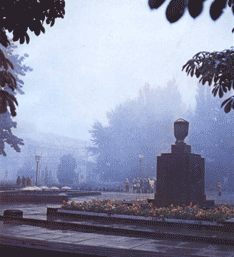 In the case of Soviet society, one could argue that the social ideal propounded in official propaganda was “strong grid, weak group” – cf. the imposition of rigid standards of “Communist morality” and the mistrust of “parallelism” (the formation of groups competing with Party and public organisations). This interpretation would also explain the large number of disenfranchised “fatalists” in this society (as particularly in the Soviet rural population after collectivisation). On the other hand, the informal groups were classic examples of “enclave” societies (non-hierarchical within, but fiercely defended from outsiders), while the internal relations of ruling elites (in the Party and in local administrations, but also in Soviet institutes) were closer to the “strong group, strong grid” model.
In the case of Soviet society, one could argue that the social ideal propounded in official propaganda was “strong grid, weak group” – cf. the imposition of rigid standards of “Communist morality” and the mistrust of “parallelism” (the formation of groups competing with Party and public organisations). This interpretation would also explain the large number of disenfranchised “fatalists” in this society (as particularly in the Soviet rural population after collectivisation). On the other hand, the informal groups were classic examples of “enclave” societies (non-hierarchical within, but fiercely defended from outsiders), while the internal relations of ruling elites (in the Party and in local administrations, but also in Soviet institutes) were closer to the “strong group, strong grid” model.
What was arguably missing from Soviet culture, except in imaginative terms, was any permutation of the “weak group, weak grid” social mode. By the late 1980s, the time of increased foreign contact with western cultures, and also of the heyday of economic monetarism, with its emphasis on individual achievement, this last type of social structure was dominant in the West, and therefore Soviet culture seemed “old fashioned” by comparison. It is not surprising that the most ambitious entrepreneurs should have espoused precisely this highly individualised model of behaviour. But groups can re-form, and grids be reinvented; the state of things in the 2000s should scarcely be regarded as an historical “end point”.
Another interesting aspect of Douglas’ model is that it allows for fluctuation. As the grid weakens, according to Douglas’ argument, so “the invisible control of fair-comparison rules” sets in (thus, “disorganization and a lack of rule” does not always result from the decline in impact of the grid). At the same time, if this “invisible control” should not take over, then the result would be an amorphous social form, where “disorganization” was unmistakable. If late nineteenth-century Russia was in the progress of moving from a society dominated by the strong group, strong grid mode to the strong group, weak grid model; Soviet power then imposed a strong grid, weak group mode at the ideological level, but the eventual result of this clash between modes was to reinforce, rather than replace, the strong group, weak grid model, which maintained a grip on much of Soviet society into the 1990s.
Yet, since the ideal types are capable of infinite modulation, it is not surprising that “weakish” or “strongish” groups and grids may be identified within different eras and in different social positions. Army recruits and communal apartment tenants (to name just two groups) would be plotted at different points on the grid/group graph. At the same time, it is fair to say that the defensive circumstances of both late Soviet and post-Soviet culture generated a preponderance of what Douglas termed “enclave communities” – i.e. “strong group, weak grid” associations. One would therefore expect to see the constellations of average social forms map out in different ways in the case, say, of British society (with higher numbers of “weak grid, weak group” social units by the late 1980s) and Russian post-Soviet society (with a higher number of “weak grid, strong group” and indeed “strong grid, weak group” units).
This way of understanding social relations is potentially more productive, and certainly more “anthropological”, than the “open society/closed society” polarisation. It shifts the focus from a discussion of whether societies are open/closed and why they are open/closed to a discussion of where they are open/closed. Of course, the drawback is that this model offers no remedies: it is not clear that any of the various permutations is in fact “superior” or “more evolved” than another. None of the different “group/grid” relations offers an ideal that social reformers could readily espouse. As Douglas herself said, “Anthropology is not the discipline for finding solutions to problems. Its homespun common sense is rarely comforting”. But possibly “open society” is an illusion anyway (another instance of a western model propounded as universal)? Perhaps, if applicable at all, the emergence of this social form characterises a very particular moment – the breakdown of the old imperial order and the rise of migrancy? Perhaps only when people “deterritorialise” (in Appadurai’s word), or are exposed to the “deterritorialisation” of others, do they quite literally become less “territorial” (though studies of displaced communities and societies exposed to migrancy would not necessarily bear this out).
Douglas herself, in relating the model to a discussion of the anthropology of consumption, suggested a link between weakening group/grid control and increased acquisition – a phenomenon about which she refused to moralise. Her discussion is instructive not just because of this, quintessentially anthropological, reservation of moral judgment, but because it provides an alternative to a straightforward contrast between “closed” and “open” societies, whose binary nature risks, as we have seen, reproducing the time-honoured polarisation between “totalitarian states” and “the free world”. Where this polarisation suggests that “liberation” may be easily achievable, “group/grid” theory provides the insight that it is much easier for social groups to aspire to the transformation of society at large than it is for them to envisage their own transformation. A society in which “enclave” groups are dominant may well think quite favourably about “open society” in the abstract, but be appalled by the idea of letting down its own group boundaries and engaging in actual practices of openness to outsiders.
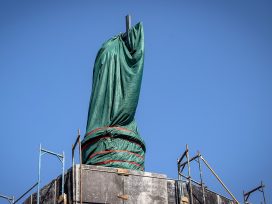
 Solzhenitsyn’s representation of Kostoglotov is typical of reflections on Soviet existence in seeing the transition from “closed” to “open” modes of existence at the level of an inner transformation of the thinking, solitary self (compare the essays of Andrei Sinyavsky and Joseph Brodsky).
Solzhenitsyn’s representation of Kostoglotov is typical of reflections on Soviet existence in seeing the transition from “closed” to “open” modes of existence at the level of an inner transformation of the thinking, solitary self (compare the essays of Andrei Sinyavsky and Joseph Brodsky). Individualism and the spread of a belief that collective practices were losing their meaning were especially characteristic of the late Soviet period. In turn, Solzhenitsyn’s Cancer Ward shows Kostoglotov making exactly the sort of “personal decisions” that were seen as essential to the “open society” by Popper. One could posit numerous causes for the emergence of “personal decisions” (or personal reactions): the shift to single-family accommodation, the growing stratification of incomes and opportunities, and increasing cynicism about Soviet corporate rituals. Yet one may doubt whether the emergence of a psychologically autonomous type actually constituted a move to an “open society”. Important as the sense of the solitary self may have been as a phenomenon in intellectual discourse, the Soviet everyday was also characterised by a proliferation of tightly constrained group relationships – for example, the “informal networks” that have been analysed by Alena Ledeneva, but also including the literary and artistic groupings of the so-called andergraund, the informal seminars run by philosophers and academics, etc., etc.
Individualism and the spread of a belief that collective practices were losing their meaning were especially characteristic of the late Soviet period. In turn, Solzhenitsyn’s Cancer Ward shows Kostoglotov making exactly the sort of “personal decisions” that were seen as essential to the “open society” by Popper. One could posit numerous causes for the emergence of “personal decisions” (or personal reactions): the shift to single-family accommodation, the growing stratification of incomes and opportunities, and increasing cynicism about Soviet corporate rituals. Yet one may doubt whether the emergence of a psychologically autonomous type actually constituted a move to an “open society”. Important as the sense of the solitary self may have been as a phenomenon in intellectual discourse, the Soviet everyday was also characterised by a proliferation of tightly constrained group relationships – for example, the “informal networks” that have been analysed by Alena Ledeneva, but also including the literary and artistic groupings of the so-called andergraund, the informal seminars run by philosophers and academics, etc., etc. Arguably, a closed society is impermeable not just in the sense that it is cut off from the outside world, but in the sense that groups within it are cut off from each other. It displays rigidity not just in terms of vertical relations (the vertikal’ vlasti or “power vertical” that is now the subject of so much discussion in Russia), but in terms of horizontal relations. Individuals who are equal in terms of their social status and social and cultural capital (i.e. who stand at the same point in the vertical hierarchy) are likely to occupy meticulously differentiated positions in the network of horizontal social relations. While difference is present in any human society, in the “closed society”, such difference is likely to be given an emotional and evaluative status, and processes of “othering” (suspicion or mistrust of “them” or the chuzhie) will proliferate. For example, generational difference is likely to be accorded much weight.
Arguably, a closed society is impermeable not just in the sense that it is cut off from the outside world, but in the sense that groups within it are cut off from each other. It displays rigidity not just in terms of vertical relations (the vertikal’ vlasti or “power vertical” that is now the subject of so much discussion in Russia), but in terms of horizontal relations. Individuals who are equal in terms of their social status and social and cultural capital (i.e. who stand at the same point in the vertical hierarchy) are likely to occupy meticulously differentiated positions in the network of horizontal social relations. While difference is present in any human society, in the “closed society”, such difference is likely to be given an emotional and evaluative status, and processes of “othering” (suspicion or mistrust of “them” or the chuzhie) will proliferate. For example, generational difference is likely to be accorded much weight. In the case of Soviet society, one could argue that the social ideal propounded in official propaganda was “strong grid, weak group” – cf. the imposition of rigid standards of “Communist morality” and the mistrust of “parallelism” (the formation of groups competing with Party and public organisations). This interpretation would also explain the large number of disenfranchised “fatalists” in this society (as particularly in the Soviet rural population after collectivisation). On the other hand, the informal groups were classic examples of “enclave” societies (non-hierarchical within, but fiercely defended from outsiders), while the internal relations of ruling elites (in the Party and in local administrations, but also in Soviet institutes) were closer to the “strong group, strong grid” model.
In the case of Soviet society, one could argue that the social ideal propounded in official propaganda was “strong grid, weak group” – cf. the imposition of rigid standards of “Communist morality” and the mistrust of “parallelism” (the formation of groups competing with Party and public organisations). This interpretation would also explain the large number of disenfranchised “fatalists” in this society (as particularly in the Soviet rural population after collectivisation). On the other hand, the informal groups were classic examples of “enclave” societies (non-hierarchical within, but fiercely defended from outsiders), while the internal relations of ruling elites (in the Party and in local administrations, but also in Soviet institutes) were closer to the “strong group, strong grid” model.

